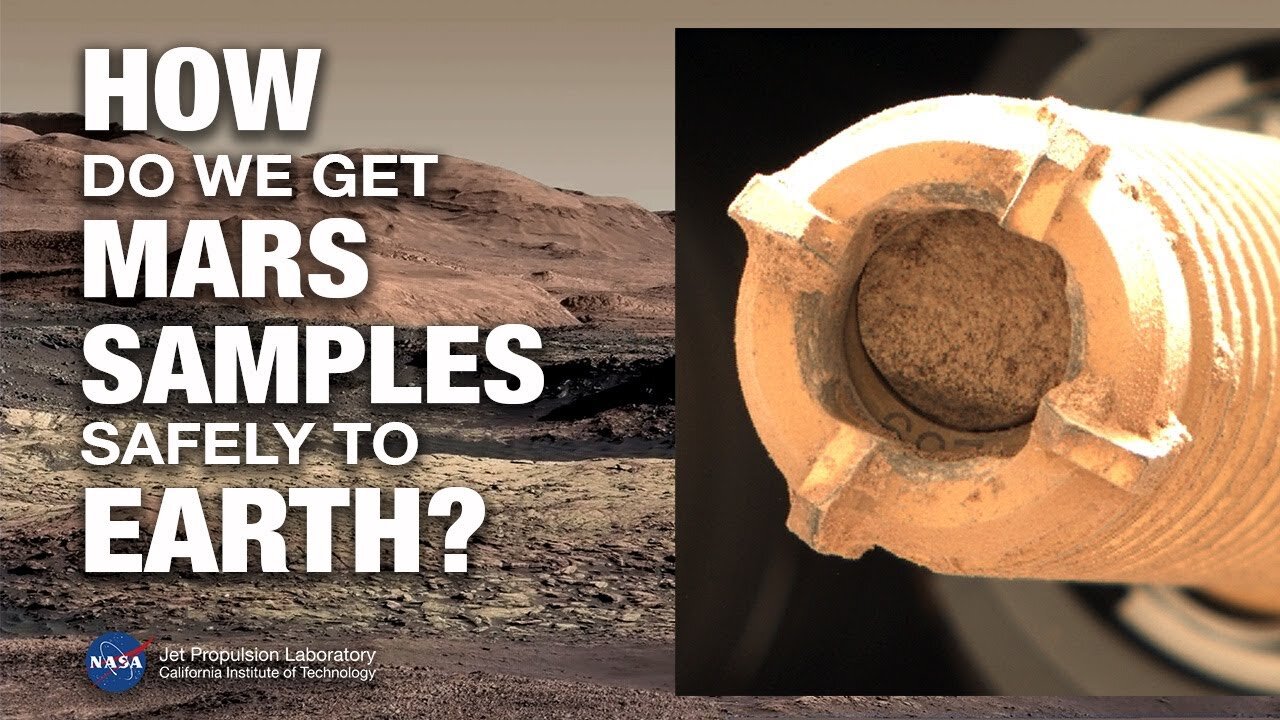Premium Only Content

How to Bring Mars Sample Tubes Safely to Earth//DXBDUBA1
Bringing Mars sample tubes safely to Earth is a complex and carefully planned mission that involves multiple steps to ensure the safety of both the samples and our planet. NASA and other space agencies are actively working on missions to collect and return samples from Mars. Here's an overview of the steps involved in safely bringing Mars sample tubes to Earth:
1. Sample Collection on Mars:
- A rover or robotic lander is sent to Mars with specialized equipment for collecting samples of Martian rocks, soil, or other materials.
- The rover's instruments will carefully select and collect samples, which are then sealed in airtight containers or tubes, preventing any contamination from Earth.
2. Sample Caching and Sealing:
- The collected samples are placed in hermetically sealed containers to ensure they remain uncontaminated and preserved during their journey back to Earth.
- The containers are designed to withstand the harsh Martian environment, including extreme temperatures and radiation.
3. Sample Storage and Retrieval:
- After collecting and sealing the samples, they are stored safely within the rover or lander until it's time to transport them back to Earth.
4. Mars Ascent:
- A separate vehicle, often referred to as the Mars Ascent Vehicle (MAV), is used to launch the collected samples from the Martian surface into orbit around Mars.
- The MAV is designed to be capable of carrying the sealed sample containers and lifting off from the Martian surface.
5. Orbital Rendezvous:
- Once in orbit around Mars, the MAV rendezvouses with a spacecraft in Martian orbit, often called the Mars Sample Return (MSR) spacecraft.
6. Transfer to Earth Return Vehicle:
- The samples are transferred from the MAV to the Earth Return Vehicle (ERV), which is part of the MSR spacecraft.
- The ERV is equipped with advanced life support and containment systems to ensure the safety of Earth's environment and to protect against any potential contamination from the samples.
7. Earth Return and Atmospheric Entry:
- The MSR spacecraft containing the samples departs from Mars and travels back to Earth.
- As it approaches Earth, the spacecraft reenters Earth's atmosphere, and any remaining propulsion stages are jettisoned to burn up in the atmosphere.
8. Parachute and Landing:
- The ERV containing the sealed sample containers is slowed down and safely parachuted to a predetermined landing site on Earth.
- The landing site is chosen to minimize the risk of contamination and maximize the safety of the recovery team.
9. Sample Retrieval and Containment:
- A team of scientists and experts retrieves the sample containers from the landing site, following strict planetary protection protocols to avoid contamination.
- The samples are carefully transported to a secure laboratory facility, often referred to as a Sample Receiving Facility, where they can be analyzed and studied while maintaining their pristine condition.
Bringing Mars sample tubes safely to Earth is a multi-step process that requires extensive planning, engineering, and adherence to strict planetary protection protocols to protect both Earth's environment and the scientific integrity of the samples. These missions are typically conducted collaboratively by international space agencies and involve rigorous safety measures at every stage.
-
 2:32:03
2:32:03
BlackDiamondGunsandGear
13 hours agoAFTER HOURS ARMORY w/ DLD & John from GOA & FLR
26.6K3 -
 1:05:28
1:05:28
Man in America
14 hours agoTREASON? Obama, Hillary, and Soros in the New World Order Agenda EXPOSED w/ Mel K
86.8K80 -
 2:22:46
2:22:46
The Connect: With Johnny Mitchell
14 hours ago $6.07 earnedOne Man's Mission To Stop Human Trafficking: How A Billionaire Mercenary Saved Hundreds Of Children
23.8K18 -
 2:35:13
2:35:13
Tundra Tactical
10 hours ago $12.41 earned🔫 California Ammo Win, Sig Sauer P320 Controversy, Meme Review & Would You Rather! 🎉🔥
40.3K6 -
 16:24
16:24
Forrest Galante
7 hours ago6 Deadliest Man Eaters to Ever Exist
28.1K6 -
 10:14
10:14
MattMorseTV
12 hours ago $15.76 earnedThe EU is in HOT WATER.
96K59 -
 6:51:32
6:51:32
The Rabble Wrangler
1 day agoPUBG with The Best in the West!
25K -
 3:57:19
3:57:19
EvilT4000
10 hours ago $8.34 earnedSaturday.....🟢For energy and focus click my Dubby link!
36.1K3 -
 3:02:55
3:02:55
SlingerGames
7 hours agoSpartan Night - Halo and More | Creator for @SELFMADEGGS
23.7K -
 3:57:49
3:57:49
Mally_Mouse
12 hours agoSpicy Saturday!! - 10k CELEBRATION! - Let's Play: Labyrinthine
36.8K1